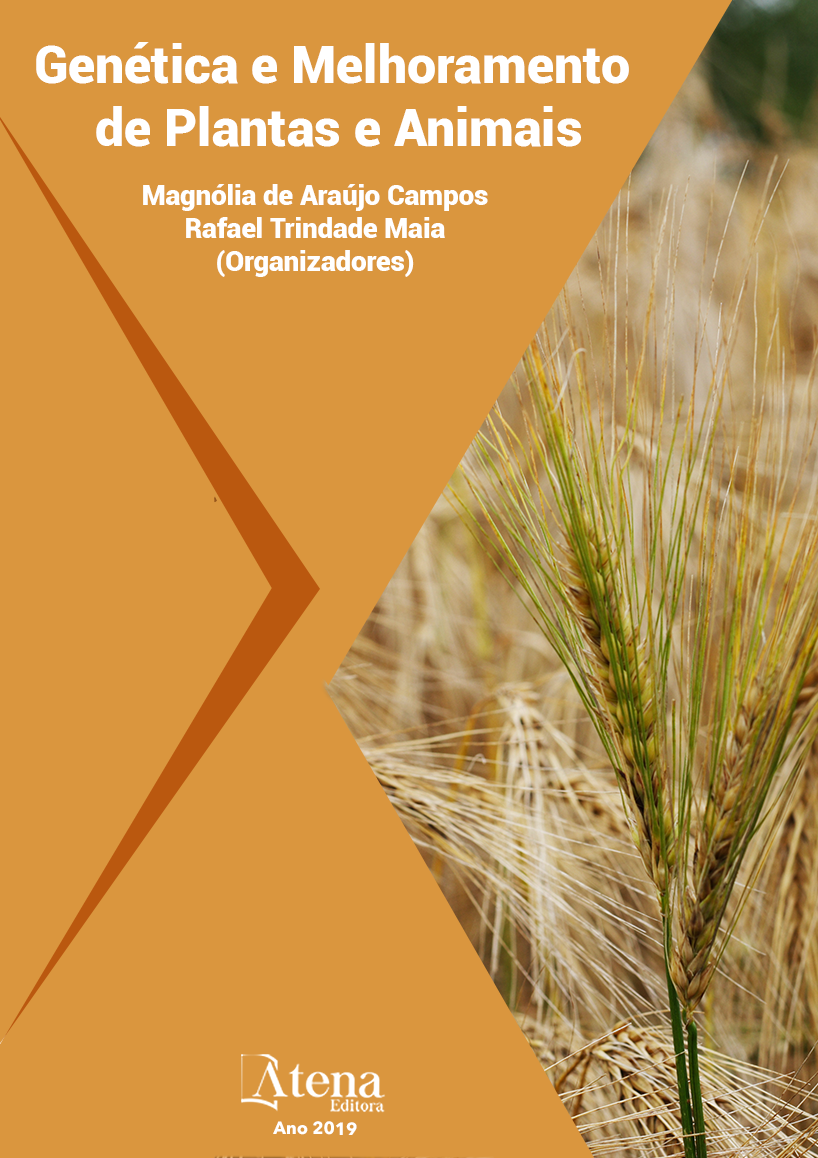
SELEÇÃO DE HÍBRIDOS DE MILHO SUMETIDOS A DEFICIT HÍDRICO NO ESTÁGIO V4
O objetivo deste trabalho foi avaliar
o comportamento de dois híbridos de milho o
Balu e Down, submetidos a diferentes estresses
hídricos até o estádio desenvolvimento V4. O
experimento foi realizado no Departamento de
Biologia da UFSM, no município de Santa Maria,
RS, em casa de vegetação. O delineamento
utilizado foi de blocos ao acaso. Os dados
obtidos foram submetidos ao teste estatístico e
as médias submetidas ao teste Tukey a 5%, que
avaliou características morfológicas de altura
de plantas, peso seco de raiz e parte aérea, em
quatro tratamentos: foram 825ml (capacidade
de campo), 412ml (1\2 capacidade de campo),
206ml (1\4 capacidade de campo) e 103ml (1\8 capacidade de campo) de irrigação semanal. A
deficiência hídrica em estádio V4 resultou que,
quanto maior estresse, maior desenvolvimento
de raízes, em sincronismo, reduziu a parte
aérea, esses parâmetros apresentou que
híbrido Down mostrou-se menos tolerante ao
déficit hídrico, e o híbrido Balu mais responsivo
ao desenvolvimento vegetativo em condições
hídricas melhores
SELEÇÃO DE HÍBRIDOS DE MILHO SUMETIDOS A DEFICIT HÍDRICO NO ESTÁGIO V4
-
DOI: 10.22533/at.ed.1921917106
-
Palavras-chave: Seleção de híbrido; Down, Balu, Estresse hídrico
-
Keywords: Selection of hybrids; Down; Balu, water stress
-
Abstract:
The objective of this work was to
evaluate the behavior of two maize hybrids, Balu
and Down, submitted to different water stresses
up to the V4 development stage. The experiment
was carried out in the Department of Biology
of UFSM, in the municipality of Santa Maria,
RS, in a greenhouse. The experimental design
was a randomized block design. The data were
submitted to the statistical test and the averages
were submitted to the Tukey 5% test, which
evaluated morphological characteristics of plant
height, root dry weight and aerial part, in four
treatments: 825ml (field capacity), 412ml ( 1 \ 2
field capacity), 206 ml (1 \ 4 field capacity) and
103 ml (1 \ 8 field capacity) of weekly irrigation. The water deficit in the V4 stage resulted in the fact that the higher the stress, the
greater root development, in synchronism, reduced the aerial part, these parameters
showed that the Down hybrid showed to be less tolerant to the water deficit, and the
Balu hybrid more responsive to the vegetative development in better water conditions.
-
Número de páginas: 15
- Luiz Augusto Salles das Neves
- Kelen Haygert Lencina
- Raquel Stefanello


